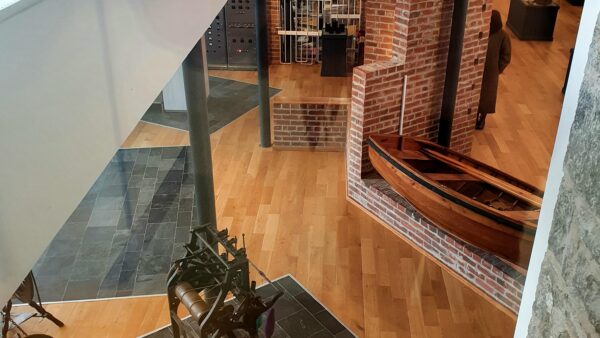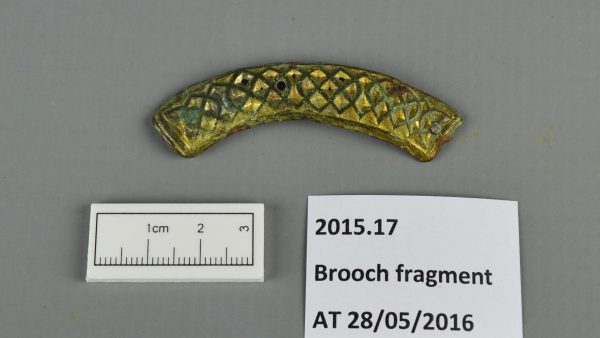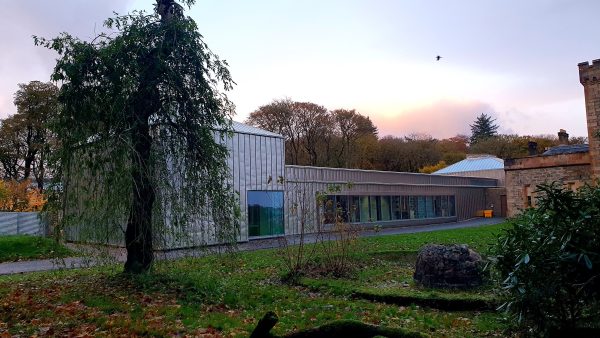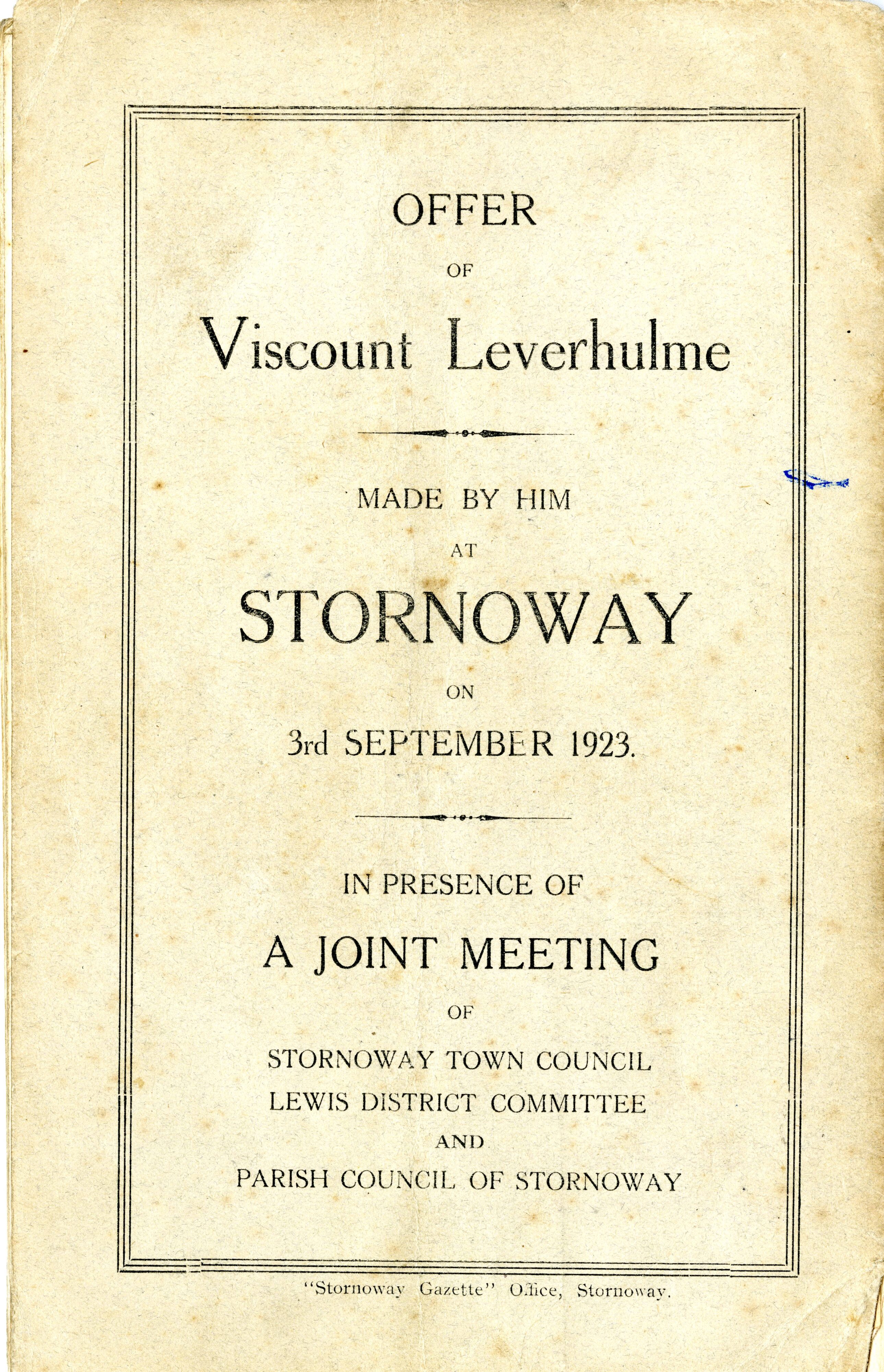
100 years of community land ownership
Lord Leverhulme’s remarkable gift
The 3rd of September 2023 marked the anniversary of the offer made by Lord Leverhulme to gift the island of Lewis to its people. This gesture, which eventually brought the Stornoway Trust into existence, is an important landmark in the history of community land ownership. Here, we briefly summarise the background which led to the offer of this remarkable gift.
William Hesketh Lever, 1st Viscount Leverhulme (1861-1925) was an industrialist and colonialist who made his fortune through the manufacture and marketing of soap and cleaning products. His company, Lever Brothers, grew to be a household name through the success of products such as ‘Sunlight Soap’ and ‘Lux’. The title ‘Viscount Leverhulme’ was conferred in 1922.
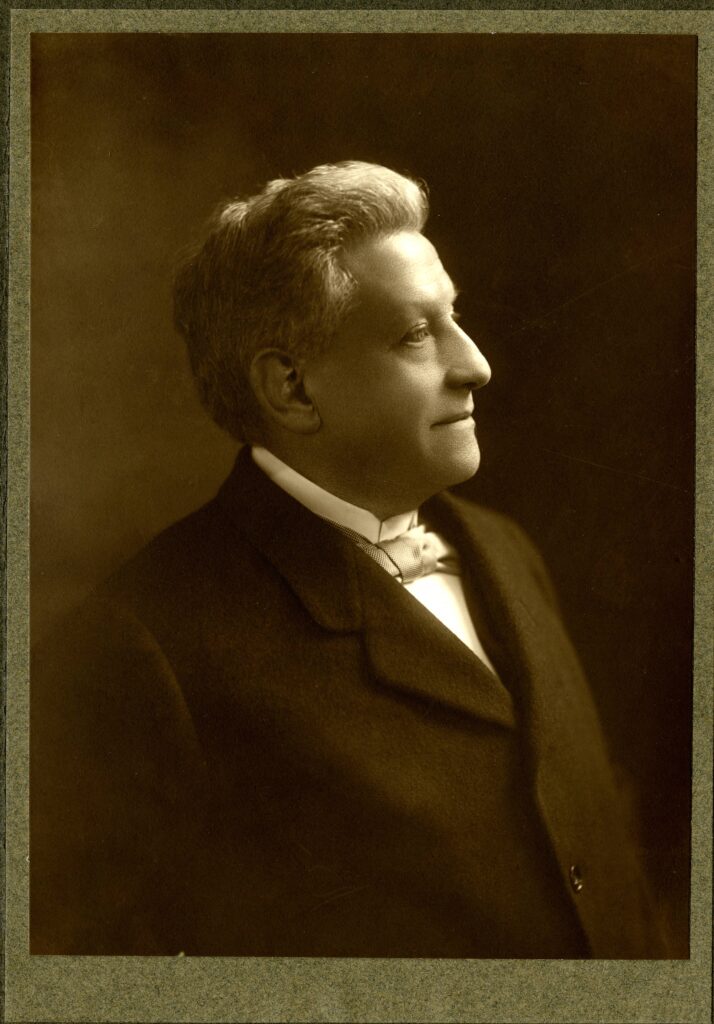
Leverhulme is remembered as a philanthropist. He established the model village of Port Sunlight for the housing of his factory workers, complete with impressive public amenities, and left bequests to various educational causes. In contrast to this reputation, the treatment of the people of the Democratic Republic of Congo (at that time the Belgian Congo), and the Solomon Islands, who worked on the Lever Brothers’ plantations to source the raw ingredients required for soap manufacture, is less well known. Research into this darker aspect of Leverhulme’s legacy is ongoing and has been acknowledged.
In 1918, Leverhulme purchased the isle of Lewis, including Lews Castle, for £143,000 from Colonel Duncan Matheson. He went on to purchase the adjoining isle of Harris in 1919. He began to try to apply his economic development ideas to the islands, but this ultimately brought him into conflict with many local people, especially on the isle of Lewis.
One of Leverhulme’s ideas was to revive the fishing industry by improving the port of Stornoway and creating his own fleet of modern trawlers. He began constructing a cannery and ice plant to take this forward. His plan was that the herring catch would be sold through his new MacFisheries chain of fishmongers. He also took a controlling interest in a Harris Tweed mill.
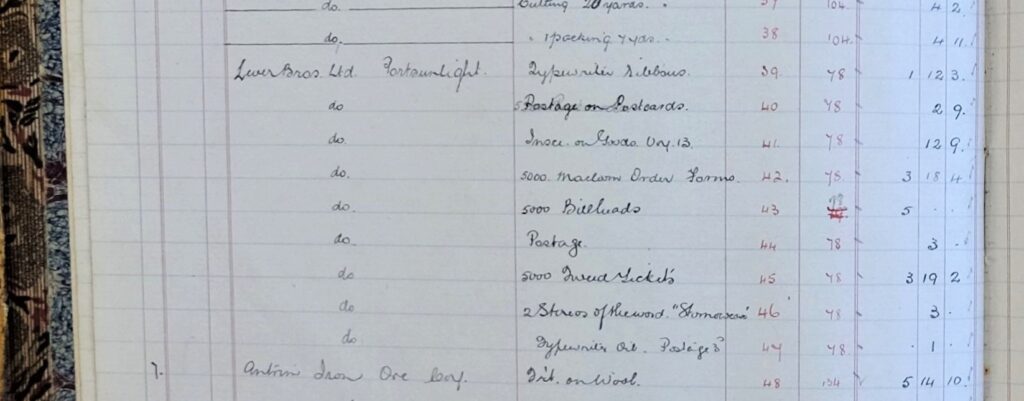
Leverhulme also planned a complete redevelopment of the town of Stornoway. Two surviving plans by his architect J.L. Simpson show new housing, a war memorial, a new town hall and an art gallery. (Stornoway’s first town hall had burned down in a fire in March 1918). Two model housing schemes were constructed in Stornoway and survive today, but Leverhulme’s other ideas for the redesign of the town did not come to fruition. Another legacy in the built environment of Lewis is the Garry Bridge, sometimes referred to as ‘The Bridge to Nowhere’ which had been part of a plan to build a road connecting Tolsta to Ness.
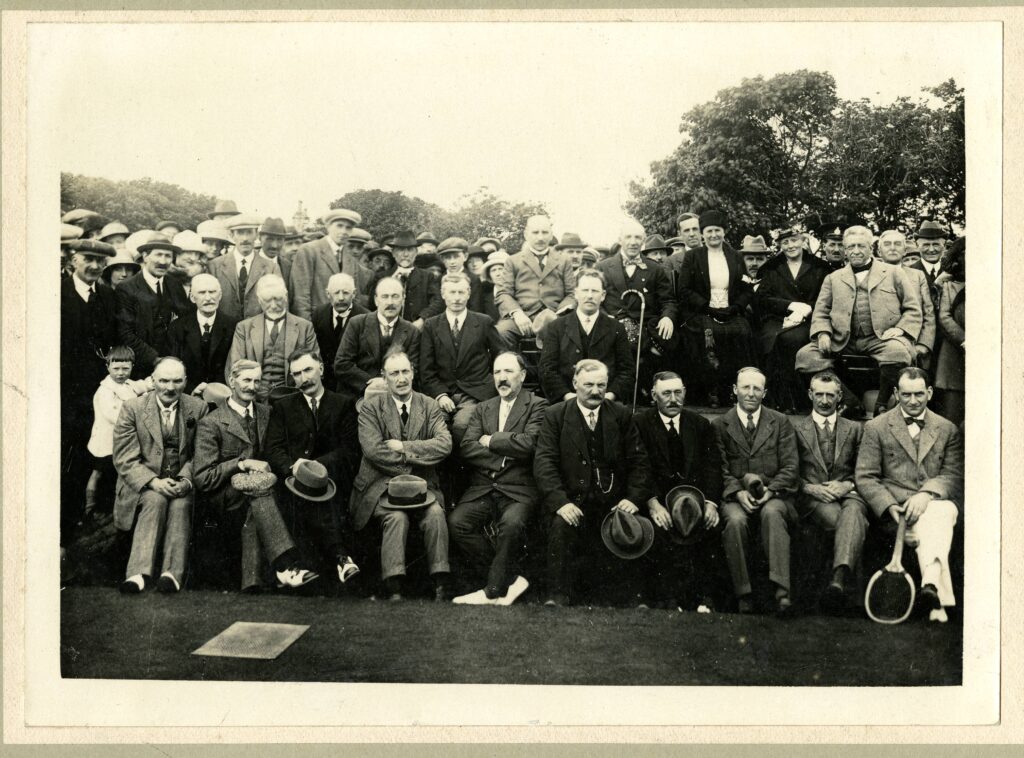
While some islanders saw Lord Leverhulme as a visionary with innovative ideas to resolve the prevailing issues of the day such as poverty, unemployment and insanitary housing, and embraced the employment he was providing through his various schemes at the close of the War, his plans were not universally welcomed. Crofters returning from the First World War had been promised a ‘land fit for heroes’. Pre-war promises by the authorities of land for crofts had not yet been fulfilled, and Leverhulme’s ideas went directly against the crofters’ wishes.
Leverhulme saw crofting as a supremely uneconomic way to make a living and wished to retain large farms. Many islanders, particularly those without land, thought these should be broken up to create new crofts. Crofters did not relish the prospect of becoming factory workers, living in Stornoway and relying on a single line of work.
After several years of a battle of wills, during which some islanders resorted to land raids and Leverhulme threatened to withdraw his schemes completely, the issue was resolved by wider events. The depression of the 1920s led to serious financial difficulties for Lever Brothers. Leverhulme’s ideas for the development of the fishing industry were threatened due to the loss of the Baltic markets in the wake of the War and the Russian Revolution. In September 1923 Leverhulme regretfully decided to withdraw from Lewis and focus his attention on Harris. It was at this point that his remarkable offer was announced.
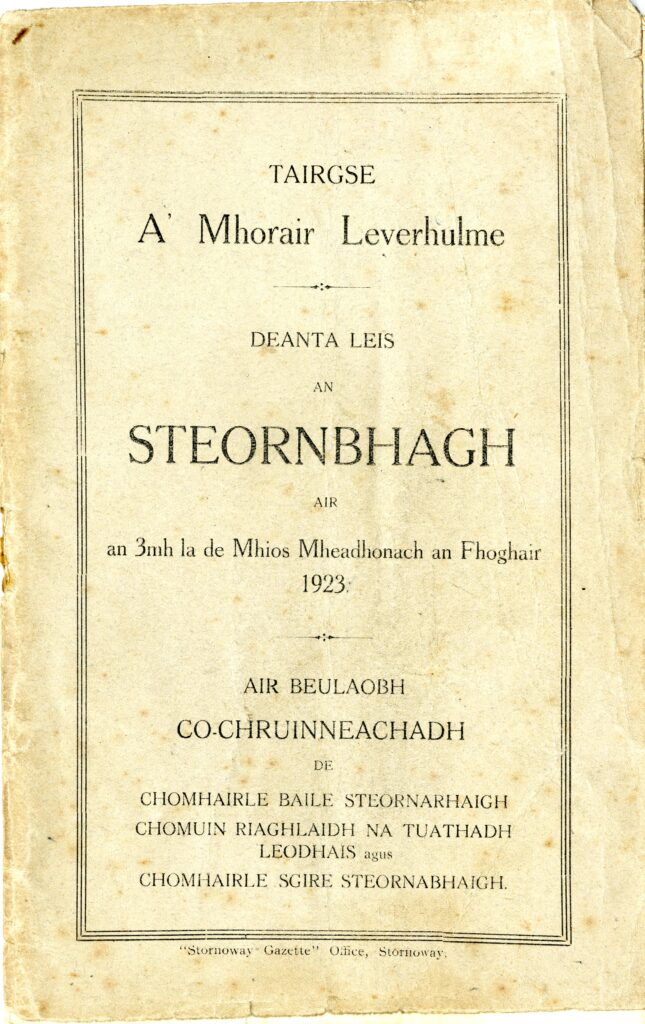
In Harris, he built a hotel, roads, houses and cottages, improved the harbour, developed fish processing, and took ownership of the Bunavoneadar whaling station. The town of Obbe was renamed Leverburgh.
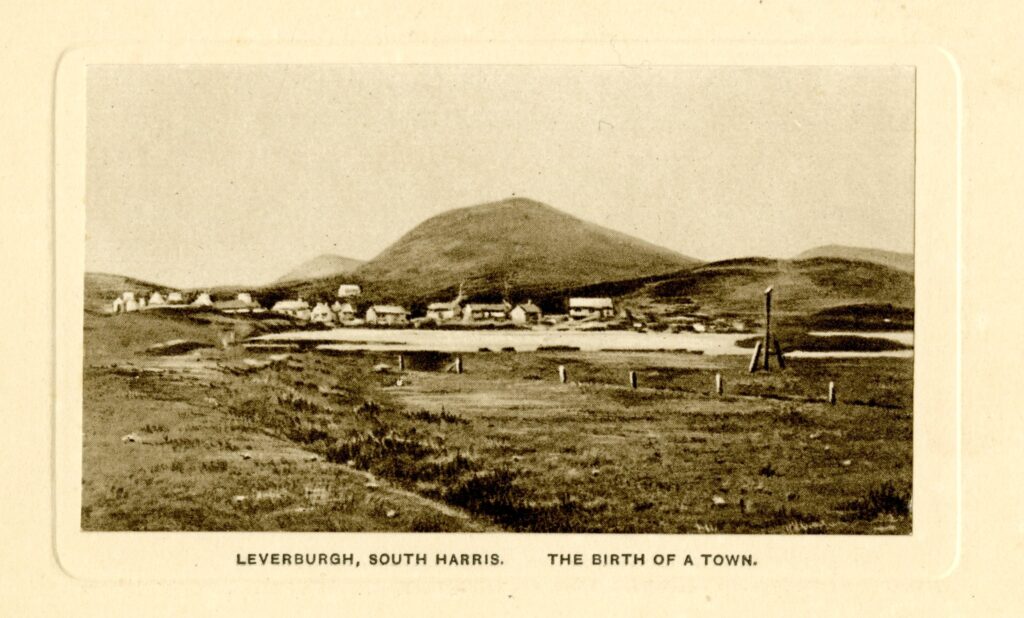
When the offer to gift the island of Lewis was publicised, it prompted debate. Islanders in most areas rejected it, as it would mean they would no longer be classed as crofters under the Crofting Acts – a status for which they and their forebears had fought dearly. Eventually, the Parish of Stornoway and a part of Lochs Parish were accepted, and so the Stornoway Trust was formed to take ownership of these areas on behalf of the community. A Deed of Trust was created in November 1923 and the first elections were held in January 1924.
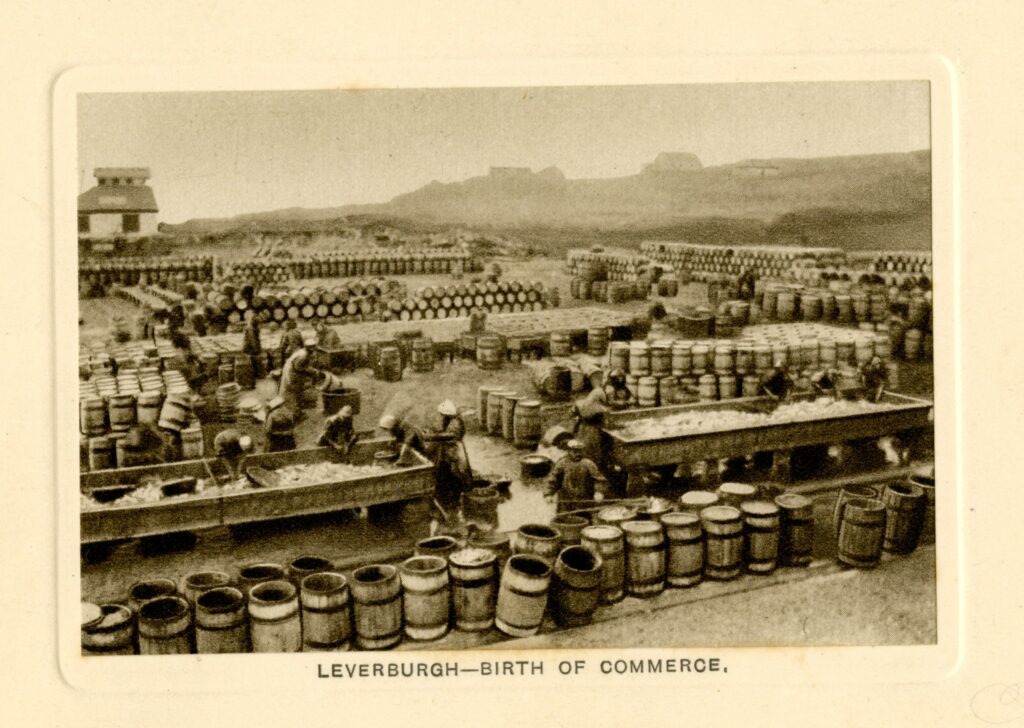
Lord Leverhulme’s gift also included Lews Castle and grounds in which Museum and Tasglann nan Eilean are situated today. During his occupancy the Castle had been reconfigured and an L-shaped ballroom created. Dances and social occasions provided much-needed cheer to the town after the dreadful events of the War and the Iolaire disaster. Leverhulme’s benevolent interest in Stornoway extended to supplying high quality copies of works of art for the pupils of the Nicolson Institute, an offer to assist with a reformed Fire Brigade following the disastrous Town Hall fire, and the provision of a ceremonial robe for the Provost of Stornoway Town Council. He was also an active member of Lodge Fortrose and paid for the restoration of their important painting of a historic Whale Hunt.
Lord Leverhulme died of pneumonia in London following a trip to Africa in 1925. Thirty thousand people attended his funeral in Port Sunlight, a day which was also marked in Stornoway.
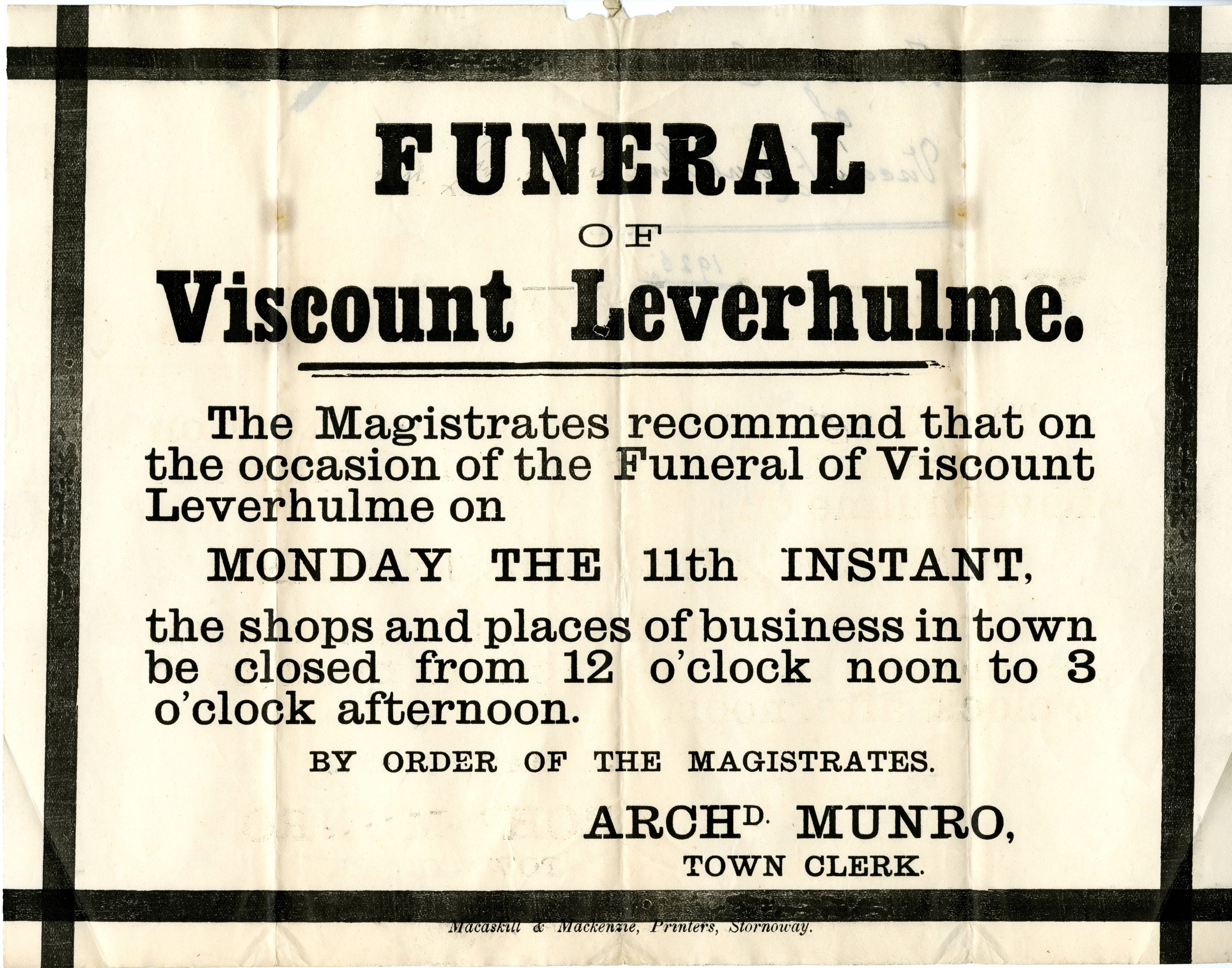
Collections and information sources
As would be expected, our archive and museum collections include a number of sources relevant to Lord Leverhulme and his time on the islands.
Museum nan Eilean:
- Robe worn by the Provost of the Stornoway Burgh Council which was presented to the Council by Lord Leverhulme
- Photograph of Lord Leverhulme, full length portrait in his robes of office, copied from an original oil painting
- Christmas Cards from Lord Levehulme
- Invitations from Lord Leverhulme
- Photo: Opening of Stornoway Bowling Green, Bayhead
- Photo: Group photo taken at Tarbert Hotel, Harris 1924. Includes Lord Leverhulme, Sir James Berry, Sir Herbert Morgan
- William J. Gibson collection, specifically letters from Mr and Mrs Gibson to their daughter Jean Gibson. These contain references throughout the period and will be the subject of a separate future article.
Tasglann nan Eilean:
- Stornoway Town Council Minute Books 1921-1923 (S/1/2/R1.485-R1.486)
- Stornoway Town Council Public Notices 1918-1925 (S1/8)
- Landward Committee of the Parish of Stornoway minute book 1895-1930 (RC1/1/R1.272)
- Lewis District Committee Minute Books 1918-1923 (RC2/R3.6-R3.10)
- Harris District Committee minute book 1924-1934 (IN2/1/1/R1.197)
- Address on economic development by Lord Leverhulme; in English and Gaelic, 4 November 1919 (GD028/2/1)
- Offer of Viscount Leverhulme made at a joint meeting of Stornoway Town Council, Lewis District Committee and Stornoway Parish Council. Sep. 1923. Published booklet in Gaelic and English. (GD005/18/48)
- Telegram from Lord Leverhulme to Duncan Grant regarding boating accident in Broadbay, Isle of Lewis Mar 1922 (GD005/8/67)
- Article by James Shaw Grant on The Leverhulme Myth with annotations Nov 1957 (GD005/14/30)
- Photographs of Lord Leverhulme (GD005/16/21 and 53)
- Photograph of Leverburgh, South Harris, The Birth of a Town 1920 with Poem on the reverse by unknown American Author (GD005/16/58)
- Lodge Fortrose archive: Two bundles of letters and documents re Lord Leverhulme (GD067/4/1/15; GD067/18/8/2)
- Harris Tweed Authority archive: Kenneth MacKenzie Ltd. Invoice book (GD014/4/1/12/3)
- Dr Donald Murray collection: Extract from ‘Shooting Times and British Sportsman’ 30 May 1925 containing article re relationship between Lord Leverhulme and Dr Donald Murray; Bundle of political speeches and notes by Dr Donald Murray M.P.
Published sources:
- Buchanan, Joni (1998) The Lewis Land Struggle: Na Gaisgich, Acair
- Hutchinson, Roger (2003) The Soap Man: Lewis, Harris and Lord Leverhulme, Birlinn
- MacDonald, Colin (1943) Life in the Highlands and Islands of Scotland incorporating ‘Highland Journey or Sùil Air Ais’. Contains account of the conflict between the crofters and the land raiders by MacDonald, who was the Gaelic-speaking special envoy of the Board of Agriculture sent to liaise between the crofters and Leverhulme
- MacDonald, Emily (1965) Twenty Years of Hebridean Memories
- Nicolson, Nigel (1960) Lord of the Isles: Lord Leverhulme in the Hebrides, Weidenfeld and Nicolson
- Rabé, Susan and Institute of Historic Building Conservation, ‘Lord Leverhulme on Lewis and Harris’ (accessed 23/9/23)
Postscript
Lews Castle had also formed part of Leverhulme’s gift, but gradually fell into a state of disrepair. The castle was restored as part of a £19.5 million partnership project funded by the Heritage Lottery Fund, the Scottish Government, the European Regional Development Fund, Highlands and Islands Enterprise and Bòrd na Gàidhlig. This project included the development of a new Museum and Archive adjacent to the Castle – Museum & Tasglann nan Eilean – which opened in 2016 with a remit to collect, preserve, hold in trust and made accessible archives and historical collections relevant to the Outer Hebrides for the community in perpetuity.
